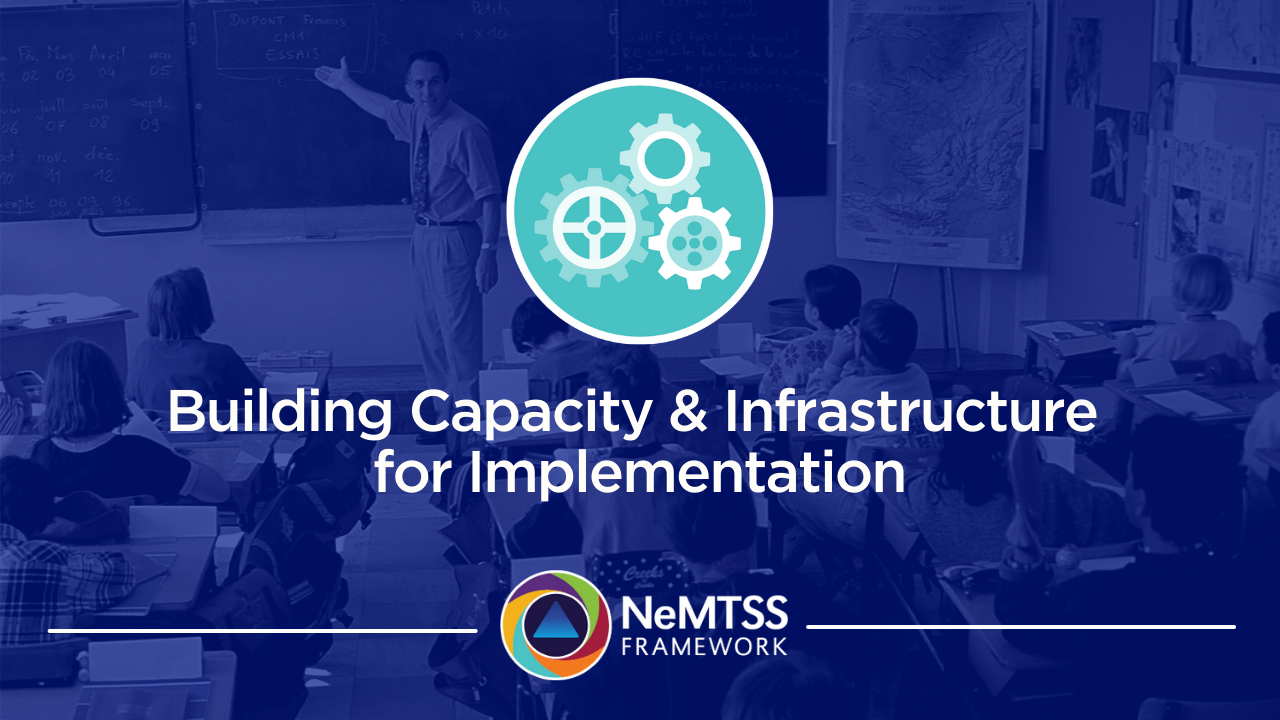Essential Element | Building Capacity & Infrastructure for Implementation
Welcome to the fourth installment of our six-part series on the Essential Elements in NeMTSS.
The Essential Elements are one of the first things new districts learn about during Systems Training. They are encouraged to think about how each element plays a part in their district currently and how each element will help them be successful with NeMTSS in the future. Each element is equally important to the process.
The NeMTSS Essential Elements are:
- Shared Leadership
- Communication, Collaboration & Partnerships
- Evidence-Based Practices: Curriculum, Instruction, Intervention & Assessment
- Building Capacity & Infrastructure for Implementation
- Layered Continuum of Supports
- Data-Based Problem-Solving & Decision-Making
In this post, we will be talking about Building Capacity & Infrastructure for Implementation.
Building Capacity & Infrastructure for Implementation
The first part of this Essential Element, “Building Capacity for Implementation,” means increasing what district staff are capable of in terms of meeting performance expectations and students’ learning needs. In this context, building isn’t referring to a physical building with doors and windows. Instead, we are talking about the process of making something and building something up — the ability or power to do, experience or understand something. Capacity means the maximum amount that something can contain.
- Do they have the training or professional learning they need to be competent and confident in their area of work?
- Does the system identify professional learning needs that are directly connected to evidence-based practices that will have a positive impact on students?
The second part, “Building Infrastructure for Implementation,” which overlaps with the first component, is inclusive of foundational components within the system, such as a problem-solving model/process, school-wide schedules that support teaming for problem-solving, access to data, a balanced assessment system, aligned professional development plans, etc. The infrastructure refers to these norms and procedures in place that will help schools implement MTSS, along with what needs to be built or refined to support MTSS.
Building Capacity & Infrastructure for Implementation is part of the Essential Elements because it is important that schools are prepared to implement MTSS successfully with the goal of sustainability over time. During System Training, our regional leaders and facilitators help schools look at their current capacity and infrastructure and identify ways to improve and create action plans to achieve these critical system components. Reviewing a district’s capacity and infrastructure before implementing MTSS can also help schools measure progress because they can look back at where they started and compare it to where they go and make adjustments along the way. The Essential Element of Building Capacity & Infrastructure contributes to system sustainability over time.
This Essential Element is tightly aligned to Shared Leadership because the strength of the leadership within a school or district is part of the measure of its capacity. Communication, Collaboration & Partnerships, another previous Essential Element, also relies on having time set aside for problem-solving meetings, planning sessions and communication. Strong capacity in educators and an effective infrastructure play a critical role in the overall success of a deeply implemented MTSS.
You can learn more about Building Capacity & Infrastructure for Implementation by visiting our page. You can also read the other posts in our series, Shared Leadership; Communication, Collaboration & Partnership; and Evidence-Based Practices: Curriculum, Instruction, Intervention & Assessment.
Next time, we will look at Layered Continuum of Supports.


